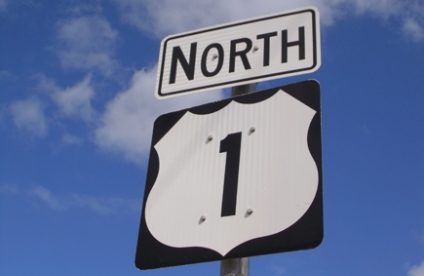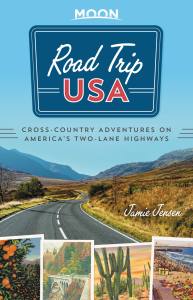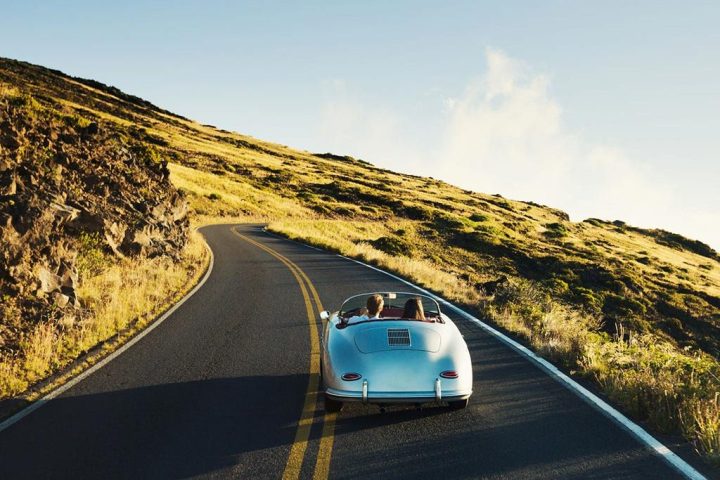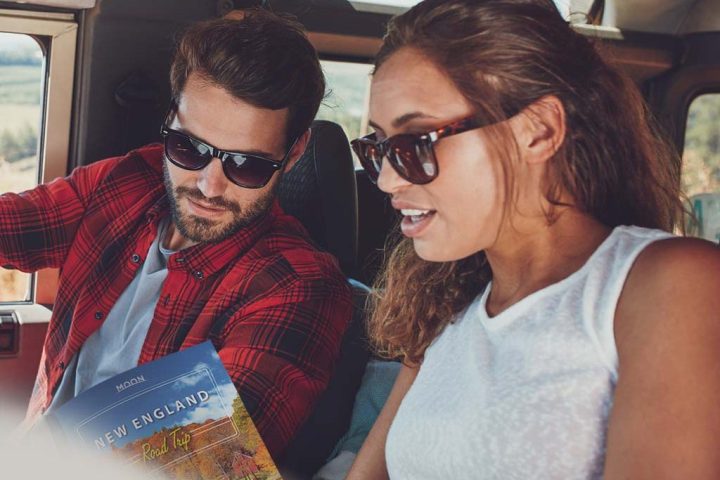Essential Supplies for a U.S. Road Trip
There is a wide array of classic songs, from “Born to Be Wild” to “Life Is a Highway,” that inspire me to hit the road. Of course, music and guidebooks aren’t the only items needed for a road trip adventure. As I’ve written before, other helpful tools of the trade may include a countrywide atlas, state-specific atlases, relevant road maps, a laptop and wireless card, and a cellphone with GPS capability. A AAA membership doesn’t usually hurt either; with it, you can secure discounted hotel and attraction rates, complimentary maps and tour books, and, if necessary, emergency roadside assistance. While it might seem like overkill to bring so many navigational tools with you, you never know when they might come in handy. On several occasions, for instance, my husband, Dan, and I have relied on our GPS to guide us–only to be disappointed by poor cell phone reception. At such times, it’s been a godsend to have traditional maps along for the ride – not to mention a willingness to ask for directions.

Besides wireless Internet access and helpful navigational tools, road trips simply wouldn’t be as much fun without diversions like auto games, audiobooks, satellite radio, scintillating conversation, and unexpected side trips. As I wrote last month, some travelers can’t go anywhere without their books, magazines, MP3 players, and hand-held DVD players, and that’s fine, too.
Of course, that’s not all you’ll need. Whether you’re planning to drive your own vehicle or rent a car, you should make room for at least some of the following automotive essentials (most of which can be stored in an organized plastic bin):
- alligator-clip test leads
- automotive fluids (motor oil, transmission fluid, radiator coolant, antifreeze, brake fluid, windshield wiper fluid, etc.)
- baling and copper wire
- brake-adjusting tool
- chisel
- claw hammer
- cleaning rags and supplies
- cleaning tool for battery terminals
- crowbar
- drive pins
- duct and electrical tape
- fire extinguisher
- flat-tire sealer
- funnel
- gallon of water
- gas can and extra fuel
- hacksaw
- hammer
- hand file
- hex key set
- ice scraper
- jacks (appropriate for your vehicle)
- jumper cables
- lighter and extra fluid
- nails, screws, nuts, and bolts
- plastic ties
- pliers (needle-nose, vise-grip, etc.)
- putty knife scraper
- red flag to signal motorists during an emergency
- screwdriver set (with slotted and Phillips heads)
- siphoning hose
- spare parts (air/oil/gas filters, belts, clamps, fuses, hoses, spark plugs, wheel bearings, etc.)
- spare set of keys
- spare tire
- spark plug tool
- spray lubricant
- steel wool
- tire gauge
- tire-inflating compressor
- tool kit
- tow cable, rope, nylon cord, and bungee cords
- voltmeter and 12-volt test light
- wind-up flashlight
- wire cutters
- wire stripping/crimping tool
- wrench kits (lug, crescent, distributor, monkey, pipe, socket, etc.)
In addition, make sure to pack the appropriate automotive manuals, proper vehicle registration, automotive insurance, personal identification (including driver’s licenses and, for foreign travelers, official passports), and varied currency (cash, travelers checks, and credit cards). Personal items will, of course, depend on the person’s gender, needs, and interests. Some people, for instance, might require feminine hygiene products, prescription and over-the-counter medicine, fancy apparel, baby food and diapers, pet food and supplies, camping gear (such as canteens, tents, sleeping bags, sleeping pads, etc.), and recreational gear (such as canoes, kayaks, bicycles, golf clubs, fishing rods and tackle, and snorkeling and/or scuba-diving gear).
Most travelers, though, will require the following personal items, especially if various weather conditions are possible along the way:
- cold-weather clothing (such as jackets and sweaters)
- hat and sunglasses
- hiking boots and sneakers
- insect repellent
- pants (lightweight for warm weather, denim for colder temperatures)
- rain gear (such as ponchos, umbrellas, and hooded raincoats)
- sandals or flip-flops (for beaches and bathhouses)
- shirts and shorts
- soap and shampoo
- sunscreen and lip balm
- swimsuits
- toiletries
- towels and washcloths
- underwear and shoes
- water shoes
Other basic supplies might include:
- batteries of all types
- battery-powered radio
- beverages (such as soda, juice, and, most critical, drinking water)
- binoculars (for wildlife watching)
- biodegradable soap
- blankets and pillows
- board games and playing cards
- bottle/can opener
- compass
- extra condiments (salt, ketchup, etc.)
- field guides
- first-aid kit (for cuts, burns, abrasions, insect stings, etc.)
- food-storage and garbage bags
- ice chest or small cooler
- lantern
- laundry bag and detergent
- mobile travel applications
- moist towelettes
- multitool device and/or pocketknife
- plasticware
- power inverter (for charging laptops, cell phones, and other devices)
- scissors
- snacks (such as nuts, crackers, raisins, dried apricots, hard candy, gum, etc.)
- still camera and/or video camera (plus related gear, such as batteries, adapters, lens filters, flashes, memory cards, tape stock, tripod, etc.)
- tape measure
- tissue and paper towels
- waterproof matches
- weather-alert radio
Of course, whenever we travel, it’s imperative that Dan and I bring two more things along for the ride: patience and Ruby, our adaptable kitty. So, what about you? Did I cover everything, or are there any items that I’ve forgotten? If, on the other hand, these lists have overwhelmed you a bit and taken some of the spontaneity out of traveling, never fear. Many of the items mentioned here can easily be found on the road; 24-hour truck stops, for instance, provide a wonderful resource for most last-minute needs.
For a little more road trip inspiration, check out my list of 10 incredible road trip routes. You might also enjoy my recap of a long-ago RV journey along Interstate 40, between Tennessee and Arizona. Then, get out there and make an outstanding road trip memory of your own!



